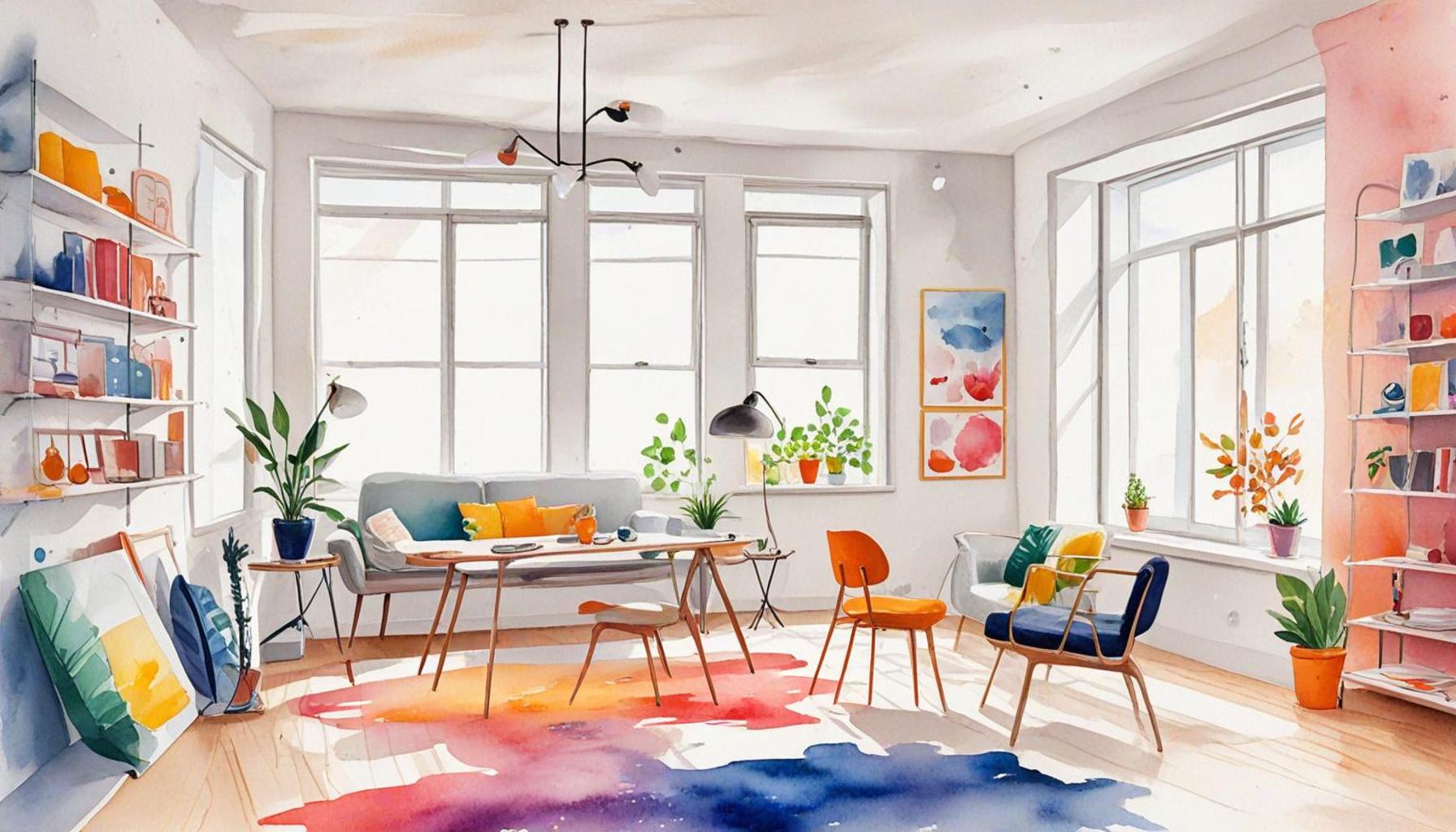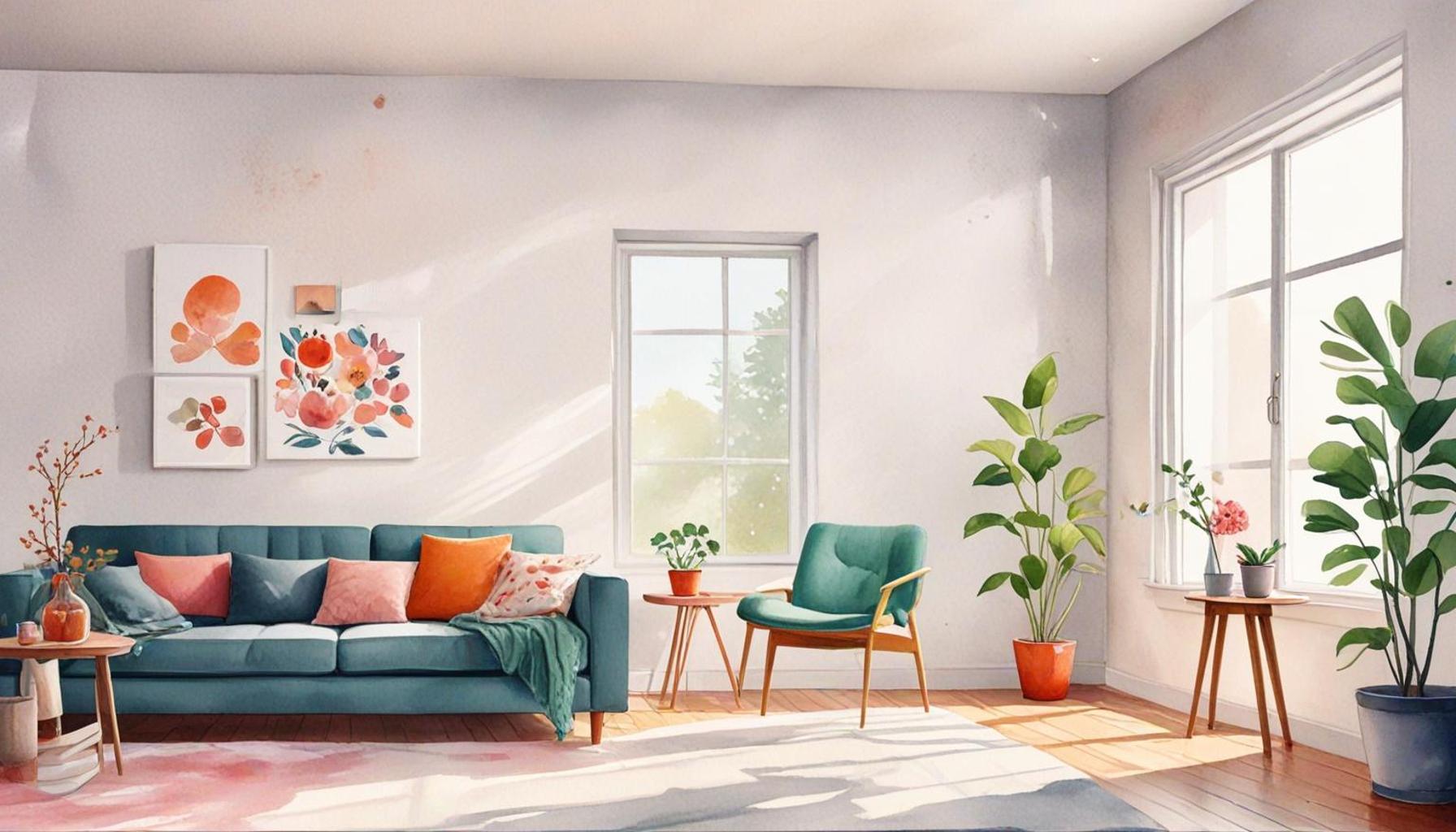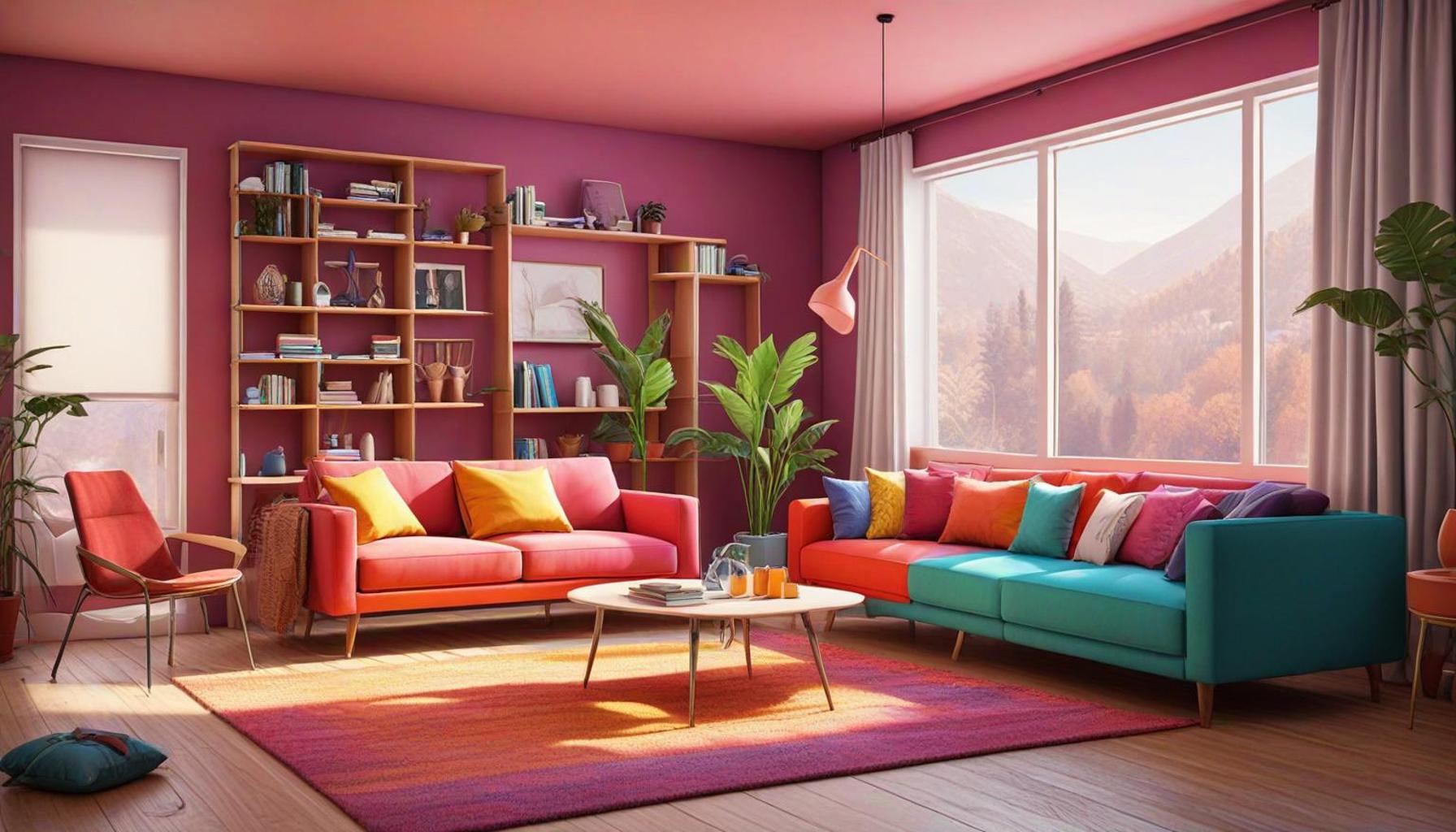Minimalism and Intentional Design: Creating Meaningful Experiences in Living and Working Spaces

The Essence of Minimalism
In a world overflowing with distractions and clutter, minimalism offers a breath of fresh air. This design philosophy emphasizes the beauty of simplicity, allowing individuals to focus on what truly matters. The essence of minimalism lies in creating spaces that foster peace, clarity, and functionality. By stripping away the unnecessary, minimalism encourages us to appreciate the value of what remains.
Intentional Design: A Key Element
To achieve this state of tranquility, intentional design plays a crucial role. This concept involves the careful consideration of every element within a space, ensuring that it serves a purpose and enriches the overall experience. It’s about making deliberate choices that reflect personal values and enhance daily living.
Features of Intentional Design
- Functional furniture: Opt for pieces that serve a dual purpose, such as a sofa bed or a coffee table with storage. This maximizes efficiency and minimizes clutter without sacrificing style.
- Natural materials: Incorporate elements like wood and stone to create a sense of harmony with nature. Consider a reclaimed wood dining table or bamboo accessories that add warmth and texture while being sustainable.
- Open layouts: Encourage free movement and reduce visual clutter by employing open floor plans in residential and workplace designs. This layout fosters communication and collaboration, crucial in both home and office settings.
The Benefits of Minimalism
As more people embrace this lifestyle, the benefits of combining minimalism with intentional design become increasingly evident. The result? Living and working environments that promote creativity, enhance productivity, and elevate well-being. For instance, studies have shown that employees in minimalist, organized workspaces tend to focus better and experience less stress, ultimately leading to improved job satisfaction.
This shift towards a more mindful approach to design is not just a fleeting trend but represents a fundamental change in how we engage with our spaces. With inspirations drawn from notable minimalist designers like Marie Kondo and architects like Tadao Ando, individuals across the United States are discovering that decluttering not only their physical spaces but their mental landscapes can lead to profound life changes.
Transforming Everyday Environments
Delving deeper into the principles of minimalism and intentional design can unlock new potential in everyday living and working environments. By reassessing our surroundings, we can create sanctuaries that facilitate focus, allow for relaxation, and inspire creativity. Imagine returning home to a serene space devoid of excess where each item reflects your taste and serves a function, enhancing your quality of life.
Join us as we explore how these concepts create meaningful experiences, transform mundane surroundings into retreats, and encourage a deeper connection with oneself and the world. The journey towards minimalism is not merely about reducing possessions; it is about making space for what truly matters.
DISCOVER MORE: Click here to enhance your organization skills
Embracing the Philosophy of Minimalism
Minimalism goes beyond aesthetics; it is a lifestyle choice that champions the *art of letting go*. By prioritizing the essentials and eliminating distractions, individuals can create an environment that supports their goals and enhances their overall quality of life. The minimalist approach encourages a shift in mindset, urging us to evaluate the significance of our possessions and the functionality of our spaces.
The Intersection of Form and Function
The principles of intentional design are intrinsically linked to the minimalist philosophy. Every element within a space should fulfill a specific purpose rather than merely existing for decoration. This holistic view helps to maintain a balance between beauty and usability, allowing spaces to serve the needs of their inhabitants. When designing both living and working environments, consider the following elements:
- Personalized spaces: Tailoring spaces to meet individual needs fosters a sense of ownership. Incorporate elements that resonate personally, whether it’s a unique piece of art, a motivational quote, or plants that bring life into the environment.
- Decluttering rituals: Establishing routines for regular decluttering can be beneficial. Set aside time each month to evaluate the items in your space, ensuring that only the most meaningful and functional items remain. This practice can lead to a calmer mindset and enhanced focus.
- Mindful consumption: Minimalism encourages being deliberate about what enters our lives. Instead of acquiring items on impulse, embrace a more thoughtful approach. Ask yourself if a purchase aligns with your values and contributes to the overall functionality of your space.
Creating Inviting Environments
Incorporating minimalism and intentional design elements into our everyday environments can transform how we live and work. The result is not only a reduction in physical clutter but an increase in mental clarity and overall well-being. For instance, a home office designed with minimalist principles can significantly enhance concentration levels. Studies have indicated that individuals working in open, decluttered spaces report increased productivity and lower stress levels.
Furthermore, the ambiance of a space plays a crucial role in our emotional responses. Integrating elements such as natural light, plants, and calming color palettes into our environments can create a serene atmosphere that positively impacts mood and motivation. As the trend of remote work continues to rise in the United States, understanding the principles of minimalist design will become essential for those looking to maximize their productivity and enhance their home office experience.
Minimalism as a Tool for Mindfulness
Ultimately, minimalism and intentional design extend beyond mere aesthetics; they serve as tools for cultivating mindfulness. By being conscious of our surroundings and the items we choose to keep, we cultivate a deeper connection with our spaces and ourselves. Embracing these philosophies allows us to escape the chaos of a busy life and creates meaningful experiences that echo throughout our daily routines.
| Advantages of Minimalism | Intentional Design Benefits |
|---|---|
| Clutter Reduction | Enhanced Focus |
| Improved Mental Clarity | Purposeful Use of Space |
| Sustainable Living | Timeless Aesthetics |
| Increased Productivity | Personal Reflection |
In an age where our environments can contribute to overall well-being, the concept of Minimalism coupled with Intentional Design has emerged as a transformative approach. By prioritizing clutter reduction, individuals can experience improved mental clarity and increased productivity. This simplicity allows people to focus more on their tasks and less on distractions, fostering a conducive working environment.On the other hand, Intentional Design emphasizes the purposeful use of space, ensuring that every element in a living or working area serves a distinct function. This not only enhances aesthetics but also encourages personal reflection, paving the way for meaningful interactions within the space. Moreover, embracing minimalist practices often leads to sustainable living as fewer resources are consumed, showcasing a commitment to eco-friendly choices. These combined elements create a harmonious balance that is both functional and visually appealing, urging readers to explore further the profound impact of minimalism and intentional design.
A MUST-READ: Click here to discover why conscious consumerism matters
The Role of Technology in Minimalist Design
In today’s digital age, technology plays a pivotal role in shaping our living and working environments, often blurring the lines between necessity and excess. The integration of technology into minimalist and intentional design enhances functionality while facilitating a more streamlined lifestyle. Smart home devices, for instance, can transform traditional spaces into efficient hubs that prioritize ease and comfort.
Utilizing smart lighting systems that adjust according to natural light can reduce clutter by eliminating the need for excessive light fixtures. Similarly, smart thermostats can help manage energy consumption, ensuring that our environment remains comfortable without the need for cumbersome controls. Such innovations not only minimize our reliance on physical objects but also contribute to a more sustainable lifestyle.
Digital Decluttering: A New Frontier
Just as physical decluttering enhances our living and working spaces, the practice of digital decluttering is equally essential in fostering a mindful environment. With the average American spending over 10 hours a day on screens, creating a digital landscape that mirrors minimalist principles can have profound effects on mental well-being. This involves organizing files and emails, uninstalling unused applications, and limiting notifications to reduce information overload.
- Organized storage: Utilize cloud storage solutions to keep documents accessible yet devoid of physical copies cluttering your workspace. Establish defined folders and regularly archive files to maintain order.
- Mindful usage: Set specific times each day for checking emails or social media. By restricting access, we establish boundaries that promote tranquility and focus.
- Selective subscriptions: Evaluate and eliminate unnecessary subscriptions to newsletters or services that do not add value to your life. Simplifying your digital presence will allow for a more intentional online experience.
Influencing Relationships Through Intentional Design
As we create minimalist spaces, it is important to consider the impact of our environments on our relationships with others. Intentional design fosters connections between individuals by creating inviting areas tailored for interaction and collaboration. In workplace settings, this can translate to open floor plans with shared spaces that encourage teamwork and communal engagement.
On the home front, arranging living areas to facilitate gatherings can enhance social bonds. By eliminating unnecessary furniture or distractions, we invite a sense of calm and focus during interactions, allowing conversations to flourish without interference. This notion of designing for connection resonates deeply in a culture where remote interactions are prevalent, as individuals crave authentic connections amidst a landscape filled with digital communication.
Sustainable Minimalism
Minimalism naturally aligns with sustainable practices, allowing us to reflect on the ecological footprint of our design choices. A focus on sustainability complements intentional design by prioritizing ethically sourced materials and energy-efficient resources. In recent years, the trend towards sustainable living has prompted many in the United States to adopt practices such as upcycling furniture, choosing non-toxic paint, and investing in energy-efficient appliances.
Incorporating elements of biophilic design, which emphasizes connections to nature, can elevate a space while promoting well-being. Adding reclaimed wood finishes or indoor gardens not only enhances the aesthetic appeal but also fosters a nurturing environment that has been shown to improve mood and reduce stress.
Conclusion: The Overall Impact
Both minimalism and intentional design challenge us to redefine our interactions with our spaces, bringing clarity, purpose, and significance to our daily routines. By embracing these principles, we not only enhance our environments but also cultivate a more meaningful and instinctual way of living that resonates deeply in today’s fast-paced and often chaotic world.
DISCOVER MORE: Click here for effective decluttering strategies
Conclusion: Embracing Meaningfulness in Design
In an era of overwhelming options and constant distractions, minimalism and intentional design emerge as powerful tools that encourage us to rethink our environments and experiences. By stripping away the non-essential, we create spaces that reflect our values and facilitate deeper connections, both with ourselves and others. This deliberate approach not only enhances functionality but also nurtures a sense of calm amidst life’s chaos.
The integration of sustainable practices into minimalist design is paramount. As we make conscious choices about the materials we use and the technology we incorporate, we align our values with an environmentally friendly footprint. Furthermore, the practice of digital decluttering complements our physical environments, ensuring that our mental spaces are equally at peace.
As we look to the future, it is clear that the implications of minimalism go beyond aesthetics. They invite us to create meaningful experiences that resonate with our inner selves and foster genuine relationships. By designing spaces with intention, we cultivate environments that inspire, welcome interaction, and promote well-being.
This journey towards minimalist living is not merely a trend; it represents a profound paradigm shift towards a lifestyle rooted in awareness. Whether through smart designs or thoughtful arrangements, embracing minimalism offers us the chance to live more fully and authentically. Now, it’s time to explore how these principles can transform your own life, one meaningful choice at a time.


